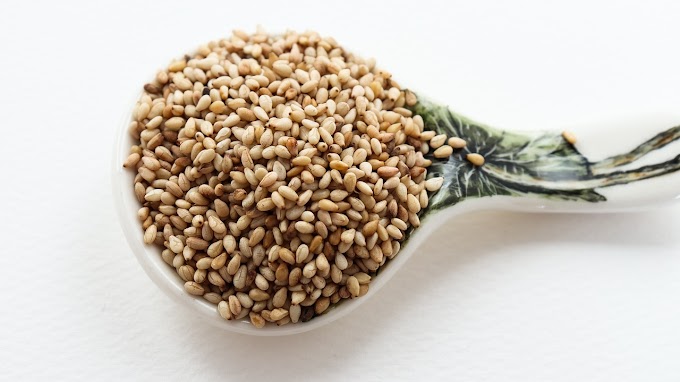Yoga and Meditation: A Journey to Peace and Wellness
Introduction
Yoga is an ancient practice that originated in India, with a history dating back thousands of years. It is a holistic discipline that encompasses the mind, body, and spirit. While it has evolved over time, the essence of yoga remains focused on achieving a balance between the physical, mental, and spiritual aspects of an individual.The practice of yoga typically involves physical postures, breathing techniques, meditation, and ethical principles, all of which aim to promote overall well-being. The physical postures, known as asanas, help to improve flexibility, strength, and balance. Meanwhile, the breathing techniques, or pranayama, emphasize breath control and help to calm the mind and improve the flow of energy in the body.

Over time, various forms and styles of yoga have emerged, each emphasizing different aspects of the practice. Some popular styles include Hatha yoga, Vinyasa yoga, Ashtanga yoga, Bikram yoga, and Iyengar yoga, among others. People practice yoga for various reasons, including stress reduction, physical fitness, spiritual growth, and overall well-being.
Yoga, rooted in ancient Indian traditions, is a holistic approach to achieving balance in life. By combining physical postures (asanas), breathing techniques (pranayama), and meditation, yoga provides a comprehensive framework that fosters physical flexibility, strength, and mental clarity. Regular yoga practice promotes circulation, improves posture, and enhances overall body awareness.
The benefits of yoga
Physical Fitness: Engaging various muscle groups, yoga enhances flexibility, balance, and core strength.
Stress Relief: Synchronizing breath with movement calms the nervous system, reducing stress and anxiety.
Mind-Body Connection: Yoga fosters mindfulness, encouraging individuals to stay present and connected with their bodies.
Pain Management: Many individuals find relief from chronic pain conditions through yoga's gentle stretches and postures.
Inner Peace: The meditative aspect of yoga cultivates inner tranquility and emotional balance.
Meditation is a practice that involves training the mind to induce a state of consciousness that promotes relaxation, concentration, awareness, and an overall sense of calm. It encompasses a variety of techniques that aim to promote mental clarity and emotional stability. While it has its roots in ancient religious and spiritual traditions, it has become increasingly popular as a secular practice for promoting overall well-being.
There are numerous forms of meditation, including mindfulness meditation, focused-attention meditation, loving-kindness meditation, and transcendental meditation, among others. Each of these practices involves different techniques, such as focusing on the breath, repeating a mantra, or cultivating specific thoughts and feelings. The ultimate goal of meditation is to achieve a heightened state of awareness and inner peace, which can have various benefits for both mental and physical health.

Research has shown that regular meditation practice can lead to reduced stress, improved emotional well-being, enhanced self-awareness, increased attention span, and better overall psychological resilience. As a result, meditation is often used as a tool for managing anxiety, depression, and other mental health conditions. Additionally, it has been found to have positive effects on physical health, such as lowering blood pressure, improving immune function, and reducing inflammation.
Meditation, on the other hand, is a practice that trains the mind to focus and quiet its incessant chatter. It can take various forms, including mindfulness meditation, loving-kindness meditation, or transcendental meditation. Regardless of the technique, meditation guides individuals toward a heightened state of mindfulness and deep internal calm.
The benefits of meditation
Stress Reduction: Regular meditation helps lower cortisol levels, mitigating stress's adverse effects on the body.
Improved Concentration: Meditation enhances attention span, memory, and cognitive function.
Emotional Well-being: Practicing meditation fosters emotional resilience and a positive outlook on life.
Better Sleep: Regular meditators often report improvements in sleep quality and a more restful night's sleep.
Self-Discovery: Meditation cultivates self-awareness, aiding individuals in exploring their thoughts, emotions, and beliefs.
Yoga and meditation can be seamlessly integrated into a daily routine, offering profound benefits for overall well-being. When practiced consistently, they can instill a sense of discipline and inner harmony, leading to a more balanced and fulfilling life.
In conclusion, both yoga and meditation offer significant benefits for physical and mental well-being. Whether you seek relief from tension, enhanced flexibility, or a deeper connection with yourself, these ancient practices can guide you on a journey toward a balanced and harmonious life. Embrace the art of yoga and meditation, and experience the transformative power they hold. Begin with small steps, maintain consistency, and witness your mind, body, and spirit flourishing in unison.
In conclusion, both yoga and meditation offer significant benefits for physical and mental well-being. Whether you seek relief from tension, enhanced flexibility, or a deeper connection with yourself, these ancient practices can guide you on a journey toward a balanced and harmonious life. Embrace the art of yoga and meditation, and experience the transformative power they hold. Begin with small steps, maintain consistency, and witness your mind, body, and spirit flourishing in unison.
FAQ's
Q1: Can I practice yoga and meditation together?Absolutely! Combining yoga and meditation can enhance their benefits. Yoga prepares the body for meditation by releasing physical tension, while meditation fosters the mental focus and mindfulness cultivated during yoga.
Q2: Do I need to be flexible to start yoga?
Q2: Do I need to be flexible to start yoga?
No, flexibility is not a prerequisite for practicing yoga. Yoga is a journey, and regular practice will gradually improve your flexibility over time. Many yoga postures can be modified to accommodate different levels of flexibility.
Q3: How long should I meditate each day?
Q3: How long should I meditate each day?
Start with just a few minutes and gradually increase the duration as you become more comfortable. Even five to ten minutes of daily meditation can yield positive results. Consistency is key.
Q4: Can yoga and meditation help with managing anxiety?
Q4: Can yoga and meditation help with managing anxiety?
Yes, both practices are known for their ability to reduce anxiety. Yoga's physical aspect helps release tension, while meditation calms the mind, reducing anxious thoughts and promoting relaxation.
Q5: Is there an ideal time to practice yoga and meditation?
Q5: Is there an ideal time to practice yoga and meditation?
The best time varies from person to person. Some prefer practicing in the morning to set a positive tone for the day, while others find evening practice helps them unwind. Experiment and find what suits you best.
Q6: Can yoga and meditation help improve overall well-being?
Yes, yoga and meditation have been linked to an overall improvement in well-being. By fostering a healthy mind-body connection, these practices promote a sense of wholeness and vitality, contributing to a more positive outlook on life.
Q7: Are there specific types of yoga that cater to different needs? Indeed, there are various types of yoga, each with its own focus and benefits. For instance, Hatha yoga emphasizes physical postures and breathing techniques, while Vinyasa yoga incorporates flowing movements synchronized with breath. Additionally, Kundalini yoga aims to awaken energy within the body, and Restorative yoga focuses on relaxation and deep rest.
Q8: How does meditation contribute to self-awareness?
Q7: Are there specific types of yoga that cater to different needs? Indeed, there are various types of yoga, each with its own focus and benefits. For instance, Hatha yoga emphasizes physical postures and breathing techniques, while Vinyasa yoga incorporates flowing movements synchronized with breath. Additionally, Kundalini yoga aims to awaken energy within the body, and Restorative yoga focuses on relaxation and deep rest.
Q8: How does meditation contribute to self-awareness?
Meditation encourages individuals to observe their thoughts without judgment, allowing them to develop a deeper understanding of their inner experiences. Through this process, individuals can gain insights into their emotions, behaviors, and thought patterns, fostering greater self-awareness and personal growth.
Q9: Can yoga and meditation be effective in promoting a sense of community?
Q9: Can yoga and meditation be effective in promoting a sense of community?
Absolutely, practicing yoga and meditation in group settings can create a sense of community and shared purpose. Participating in group classes or meditation circles can provide emotional support, foster a sense of belonging, and encourage social connections, contributing to overall well-being and a sense of belonging.
Q10: How can one maintain motivation and consistency in their yoga and meditation practice?
Q10: How can one maintain motivation and consistency in their yoga and meditation practice?
Setting realistic goals, creating a dedicated space for practice, and finding a routine that suits your lifestyle can help maintain motivation and consistency. Additionally, seeking guidance from experienced instructors, joining yoga or meditation communities, and exploring different styles can keep the practice engaging and inspiring over time. Regular self-reflection on the benefits experienced from these practices can also serve as a source of motivation.







